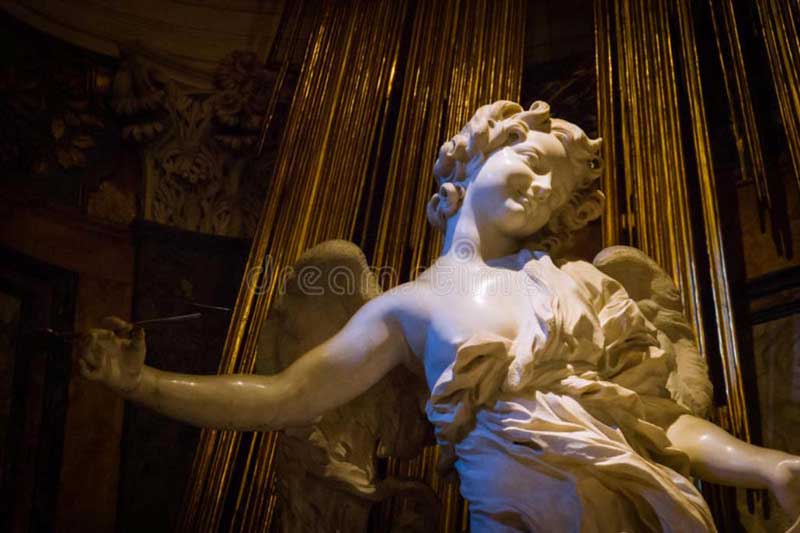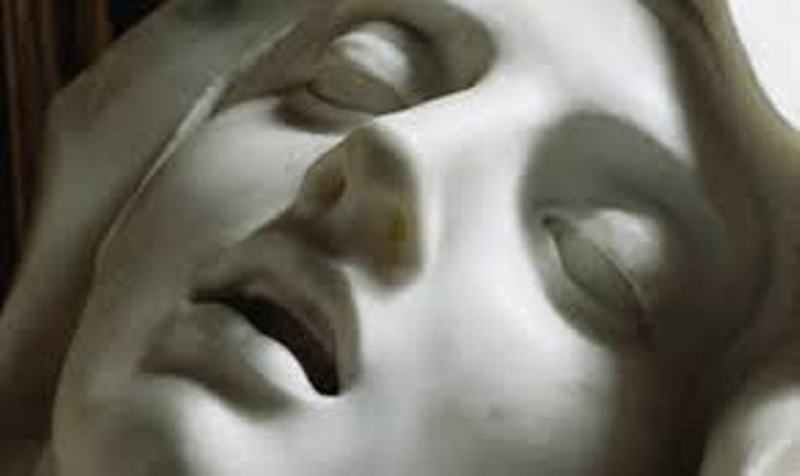
Born as Teresa Sanchez de Capeda y Ahumada in Avila, Spain on 28 March 1515, St. Teresa of Avila, the Roman Catholic Saint and Carmelite nun of the 16th century, was a prominent Spanish mystic. She traveled on foot to establish small convents throughout Spain and thus came to be known as the ‘walking’ (andariega) saint. She died on 4 October 1582 at the age of 67, canonized by Pope Gregory XV in 1622, forty years after her death and was declared a Doctor of the Church for her writing and teaching on prayer, by Pope Paul VI.
Considered as a pioneer of the High Roman Baroque style, Italian sculptor Gian Lorenzo Bernini created his masterpiece ‘Ecstasy of Saint Teresa’, for the Cornaro Chapel in Rome’s Santa Maria della Vittoria. Commissioned by Cardinal Patriarch Federico Cornaro, the exquisite sculpture, located above the altar, represents an episode from the life of the saint as recorded in her spiritual autobiography.

In the relative episode of her autobiography, Teresa described the appearance of an angel before her. He was short, but extremely beautiful and his face was so aflame that he seemed to be all on fire. In his right hand he was holding a great golden spear and at its iron tip, there appeared to be a point of fire.
The beautiful, bare-chested young angle gently opens Theresa's dress and plunged it in her heart several times, while the saint threw back her head with an expression of ecstasy, utterly consumed by the great love of God. The pain was so severe that she could not stop uttering several moans and the sweetness caused by the intense pain was so extreme that she wished it to continue, as if it sent her into a trance.

The sensuality of Gian Lorenzo Bernini’s exquisite masterpiece Ecstasy of Saint Teresa is directly inspired by St. Theresa's own writings, in which she described her mystical experiences in overtly erotic terms. Ever since its creation, some people feel offended by its sexual aspect. However, some critics insist that Bernini could not possibly have intended to tinge the subject with an erotic energy, as that would have been inconceivably heretical for that time.
But, the erotic overtones are unmistakable in the piece, most obviously in the nun’s orgasmic expression and the writhing fabric wrapping both figures. Simon Schama, a reputed historian, opined that, Teresa's facial expressions make her look like she is having an orgasm and the spear of the angel is actually an imagery for the male sexual organ. Moreover, in the sculpture, the spear is not pointed in the direction of the nun's heart as Teresa described it, it points towards her sexual organ.

However, Bernini placed the statue pretty high and thus is not at eye level, but seen from a lower point of view. From that angle, the spear that the angel holds does not point to the sexual organ, it is actually pointing right to the heart, as described by Teresa. The facial expression of Teresa indicates physical pleasure, but it is caused by the love of god she felt.

In the sculpture, Teresa is clothed from head to foot in a loose hooded garment. She is depicted with one bare foot, the left one prominently displayed. Her eyes are shut, her mouth opened, as she faints in supreme ecstasy. Standing before her is the figure of a winged youth. His garment hangs on one shoulder, exposing his arms and part of his upper torso. In his right hand he holds an arrow or a spear that is pointed at the heart of Teresa. The bronze rays, emanating from an unseen source above, seem to rain down divine light, pointing out the fact that the statue is about a holy person. The light explains the facial expression, which is not about sexual lust, but about the overwhelming feeling of love she gets when she feels the love of god in her veins. The combined effect is one of intense drama. The saint and the angel, set upon a cloud, seem to be ethereal and floating like a light feather, though they were made of heavy marble.